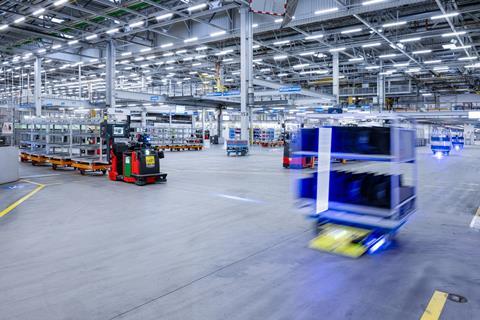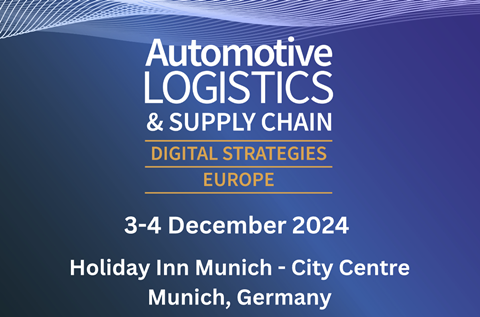BMW is using a cloud-based traffic control system to guide the 140 smart transport robots (STRs) and 50 tugger trains it uses to deliver parts to the assembly line at its Regensburg assembly plant in Germany. The carmaker said the BMW Automated Transport Services (ATS) system is ensuring optimal route guidance and on-time provisioning of parts to the assembly line according to delivery priority.

The digital technology is part of the company’s ongoing development of the BMW iFactory strategy which is introducing flexible, efficient and digital manufacturing technologies across BMW’s plants globally.
Driverless, automated or autonomous transport systems handle the majority of in-plant parts moves at Regensburg. BMW said that in some cases the loading and unloading of transport vehicles is also fully automated.
In-plant logistics at BMW Regensburg is complex because each of the 1,400 vehicles manufactured daily are built to individual customer preferences and can also be either combustion-engine vehicles, plug-in hybrids or fully-electric models of the BMW X1 and X2. The autonomous delivery vehicles handle approximately 10,000 part deliveries each day.
Smaller parts are transported from the warehouse to the assembly line by automated tugger trains. Larger components weighing up to a tonne are handled by STRs, which are flat transport robots. The vehicles operate autonomously using dedicated AI modules and sensors to recognise the factory environment, navigating around obstacles independently when oncoming traffic permits. In June this year BMW also added an autonomous transport vehicle in the Regensburg press shop with a payload capacity of 55 tonnes.

BMW explained that the ATS control system receives a signal when new parts need to be delivered when employees on the assembly line rotate the change frame with the empty parts containers.
The ATS provides optimal route guidance, based on delivery priorities, and ensures transport devices are sensibly parked and their batteries sufficiently charged, according to BMW.
“What makes this so unique are the many sequenced parts specifically tailored to each customer vehicle,” said Thomas Dietz, responsible for process improvement and quality management for physical logistics. “They must all be delivered in the order they are installed on the assembly line. Even a brief system failure in the supply of sequenced parts would bring production to a halt – and, of course, that is something we want to avoid. A lot of detailed work on both hardware and software was needed to reach the current status.”
BMW’s Regensburg plant was previously recognised by the World Economic Forum (WEF) as a “manufacturing lighthouse” of the fourth industrial revolution, thanks to its innovations in logistics.


























![Global[1]](https://d3n5uof8vony13.cloudfront.net/Pictures/web/a/d/s/global1_726550.svgz)














No comments yet